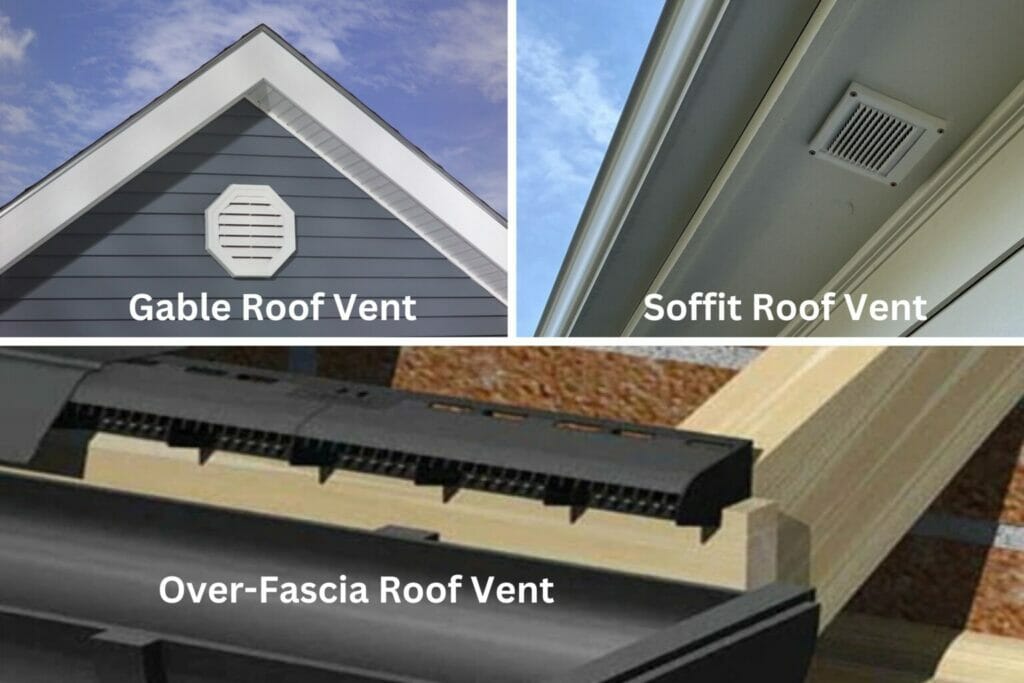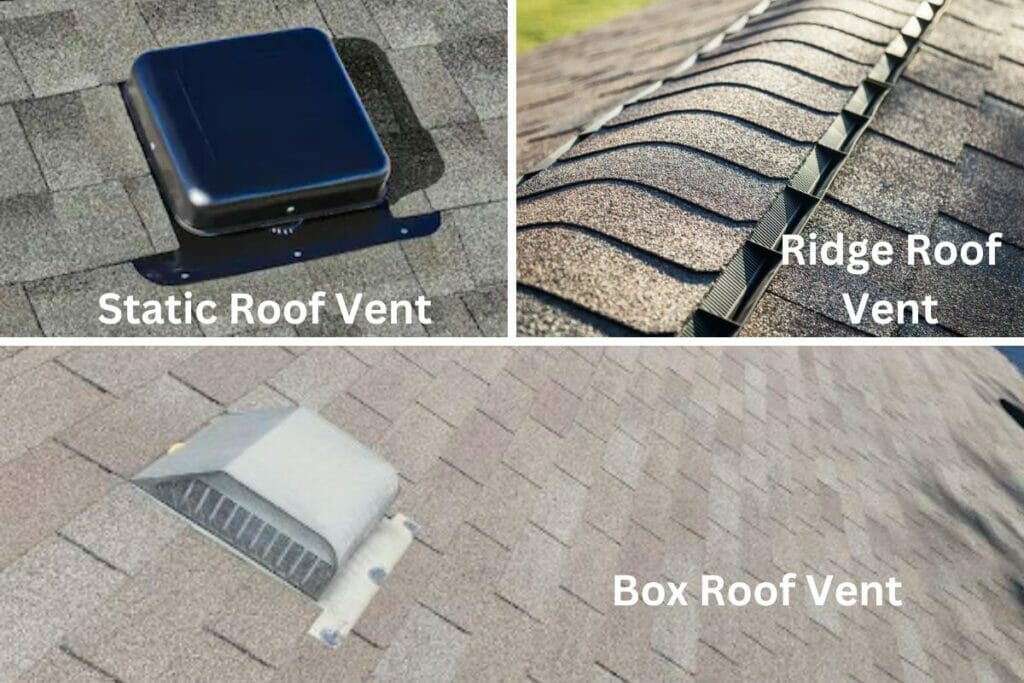Are you tired of sweltering summers and skyrocketing energy bills due to poor roof ventilation? The answer to your comfort and savings lies in choosing the right roof ventilation system. Did you know that proper ventilation not only cools your home but also prevents moisture damage and extends the lifespan of your roof? Our comprehensive comparison takes you on a journey through various ventilation options, helping you uncover the perfect match for your needs. From ridge vents to exhaust fans, we will discuss the details of each system, empowering you to make an informed decision. Say goodbye to stifling indoor heat and embrace a breath of fresh air with a ventilation solution tailored to your needs.
What Do You Mean By Roof Ventilation?
Roof ventilation refers to the intentional design and installation of systems within a building’s roofing structure that allow air to flow in and out of the attic or enclosed roof space.
The primary purpose of roof ventilation is to regulate temperature and moisture levels within the attic, which can provide several benefits for the overall health of the building and its occupants. Here’s a breakdown of its key aspects:
1. Temperature Regulation: During hot weather, heat from the sun can cause the temperature in the attic to rise significantly. Proper roof ventilation helps to prevent excessive heat buildup by allowing hot air to escape, reducing the strain on the building’s cooling systems and potentially lowering energy costs.
2. Moisture Control: Moisture can accumulate in the attic due to factors such as humidity and leaks. This moisture can lead to mold growth, wood rot, and other structural issues over time. Effective roof ventilation helps prevent the buildup of excess moisture by allowing it to escape, thus reducing the risk of damage.
3. Preventing Ice Dams: In colder climates, inadequate roof ventilation can contribute to the formation of ice dams. These occur when snow on the roof melts, runs down to the eaves, and then refreezes, causing a dam of ice to form. Proper ventilation helps maintain a consistent temperature on the roof, reducing the likelihood of ice dams.
4. Extending Roof Lifespan: Excessive heat and moisture can accelerate the deterioration of roofing materials, leading to a shorter lifespan for the roof. Roof ventilation helps extend the longevity of the roof by maintaining more favorable conditions in the attic space.
5. Energy Efficiency: By preventing the attic from becoming overly hot, the need for air conditioning may be reduced, contributing to energy savings. Additionally, a cooler attic can help prevent heat transfer from the roof to the living spaces below during the summer.
Understanding Different Types of Vents
The primary purpose of roof ventilation is to regulate temperature and moisture levels within the attic, which can have several benefits for the overall health of the building and its occupants. Roof ventilation involves the use of intake and exhaust vents to create a flow of air within the attic space. There are various types of both intake and exhaust vents, each with its own design and purpose. Here’s an overview of the different types:
1. Intake Vents
In the realm of roofing systems, one often overlooked component that is crucial for a healthy and efficient home is intake vents. These unassuming parts play a pivotal role in maintaining proper airflow within your attic, which has a profound impact on your home’s overall well-being.
Why Intake Vents Matter
Proper attic ventilation is more than just a convenience – it’s a necessity. A well-ventilated attic can prevent a host of problems, including moisture accumulation, mold growth, and premature roof deterioration. Additionally, it contributes to the overall energy efficiency of your home by helping to regulate indoor temperatures, reducing the load on your cooling systems, and potentially lowering utility bills.

Types of Intake Vents
- Soffit Roof Vents: These discreet vents are nestled along the underside of your roof’s overhang or soffit. Their location takes advantage of the natural temperature difference between the outside air and your attic. Soffit vents draw in cooler outdoor air, which then displaces the warmer air within the attic. These vents seamlessly blend into your home’s architecture while keeping your attic cool and dry.
- Gable Roof Vents: Positioned at the gable ends of your roof, these vents contribute to both aesthetics and functionality. They work harmoniously with other intake and exhaust vents to facilitate optimal air circulation. Gable vents are strategically placed to harness the wind, creating a dynamic flow of fresh air throughout your attic space.
- Over-Fascia Roof Vents: When soffit space is limited, over-fascia vents come to the rescue. Installed above the fascia board, these vents provide an unobstructed entry point for outside air. By preventing insulation or other materials from blocking the airflow, over-fascia vents ensure a consistent and efficient ventilation pathway.
Understanding the significance of intake vents and their various types empowers homeowners to make informed decisions about their roofing systems. From the understated elegance of soffit vents to the strategic functionality of gable vents, each type plays a critical role in maintaining your home’s health and comfort.
Read More, “SOFFIT VENTS VS. RIDGE VENTS: WHICH IS BETTER?“
2. Exhaust Vents and Their Types
When we think of a well-functioning roof, we often envision its visible components like shingles, gutters, and chimneys. Yet, nestled atop your roofing system are exhaust vents, the unsung heroes responsible for maintaining a balanced and healthy attic environment. In the next section, we delve into the world of exhaust vents and their various types, discussing their significance and how they contribute to your home’s comfort and longevity.
Why Exhaust Vents Matter
Exhaust vents work harmoniously with intake vents to create a dynamic system that regulates airflow within your attic. They play a pivotal role in expelling hot, humid air from the attic, preventing moisture buildup that can lead to mold, wood rot, and other structural issues. While intake vents bring cool, fresh air into the attic, exhaust vents push hot air out, creating a continuous cycle of airflow.

Types of Exhaust Vents
- Ridge Roof Vents: Positioned along the ridge of the roof, these vents offer a sleek and efficient solution for attic ventilation. Ridge vents consist of a continuous opening covered by a weather-resistant material. This design allows hot air to escape evenly along the entire ridge, ensuring consistent ventilation.
- Power Ridge Roof Vents: As technology advances, power ridge vents are emerging as an innovative solution. Equipped with fans or motors, these vents actively draw hot air out of the attic, increasing the rate of ventilation. Power ridge vents are particularly effective in regions with minimal wind.
- Box Roof Vents: Box vents, also known as low-profile vents, are unobtrusive additions to your roofing system. They are designed to fit seamlessly onto the roof’s surface, resembling small boxes. Box vents utilize the pressure difference between the attic and the outside environment to create airflow, expelling hot air while preventing the entry of rain or debris.
- Static Roof Vents: These non-mechanical vents are situated on the roof’s surface and utilize natural convection to expel hot air from the attic. When paired with intake vents, they foster a balanced and effective ventilation system.
Exhaust vents are integral to maintaining a healthy and efficient roofing system. From the classic efficiency of static vents to the cutting-edge technology of power ridge vents, each type contributes to your home’s well-being. As the roofing industry evolves, the future promises even more innovative exhaust vent solutions, ensuring that your attic remains a comfortable, energy-efficient space for years to come.
Read More, “ROOF EXHAUST VENT VS. ATTIC FAN: WHICH IS BETTER?“
The Future of Intake and Exhaust Vents
The world of roofing vents is not stagnant, it evolves with advancements in technology and architectural innovation. Looking ahead, here are some developments we can expect with vent systems:
- Smart Vents: Anticipate the integration of smart technology into intake and exhaust vent systems. These systems might offer remote control and monitoring, enabling homeowners to adjust ventilation settings based on weather conditions or occupancy.
- Improved Efficiency: Ongoing research and engineering will likely lead to even more efficient vent designs. These innovations could enhance airflow patterns, optimize temperature regulation, and further reduce energy consumption.
- Sustainability: The future holds the promise of eco-friendly materials and designs for intake and exhaust vents. As sustainability takes center stage, roofing solutions will likely embrace materials and technologies that minimize environmental impact.
Factors To Consider When Choosing Roof Ventilation Systems
The choice between intake and exhaust vents, or a combination of both, depends on a variety of factors that are unique to your home’s architecture, climate, and your preferences:
- Architectural Aesthetics: Consider how each type of vent complements your home’s design. Soffit and gable vents offer subtle integration, while ridge vents can provide a sleek, uniform appearance.
- Climate Considerations: Your regional climate significantly influences your choice. Hot and humid climates might benefit from robust exhaust systems, while cooler areas could focus on efficient intake systems.
- Attic Space: The layout and space available in your attic determine the efficiency of certain types of vents. Over-fascia vents are valuable when traditional soffit space is limited.
#1 Calculating Your Home’s Ventilation Space: The 1/300 Rule
Ventilation is essential for a well-functioning roofing system, and understanding how to calculate the necessary amount of ventilated space is a vital step toward a healthy home. Fortunately, the 1/300 rule provides a straightforward approach to determining how much ventilation your attic requires. Let’s go over this rule and walk through an example to illustrate its application.
#2 What is the 1/300 rule?
The 1/300 rule is a tried-and-true method that offers a general guideline for determining the appropriate amount of ventilation space your attic needs. This rule is based on the ratio of ventilation to the area of your attic floor:
- For Static Roof Vents: Provide 1 square foot of ventilation for every 300 square feet of attic floor space.
- For Power Roof Vents: Allocate 1 square foot of vent area for every 150-200 square feet of attic floor space.
#3 Calculating Your Ventilation Space: A Simple Example
Let’s walk through a simple example to illustrate how the 1/300 rule works. Suppose you have a home with an attic floor area of 2,000 square feet.
Determine the Area Needed:
According to the 1/300 rule for static roof vents, you’ll need 1 square foot of vent area for every 300 square feet of attic floor area.
- Ventilation Area Needed = Attic Floor Area / 300
- Ventilation Area Needed = 2,000 sq. ft. / 300
- Ventilation Area Needed ≈ 6.67 sq. ft.
#4 Choose Ventilation Units:
You’ll need to find static roof vents that collectively provide approximately 6.67 square feet of vent area. Depending on the specific vents available, you can divide this requirement among various vents to achieve the desired amount of ventilation.
Conclusion
The journey towards selecting the ideal roof ventilation system is a significant endeavor, and one that directly influences the health and comfort of your home and its occupants. Whether you’re considering the seamless efficiency of intake vents or the dynamic effectiveness of exhaust vents, each type plays an integral role in optimizing your home. As you embark on this decision-making process, put your trust in the insights and expertise that Renova Roofing & Construction offers. With our guidance, your home’s comfort and energy efficiency will reach new heights. For personalized assistance, reach out to us at (601) 647-3433. Your home’s well-being is our top priority.
And don’t miss out on gaining a deeper understanding of your roof’s anatomy through our blog post: The Anatomy Of A Roof: Understanding How Each Part Functions

